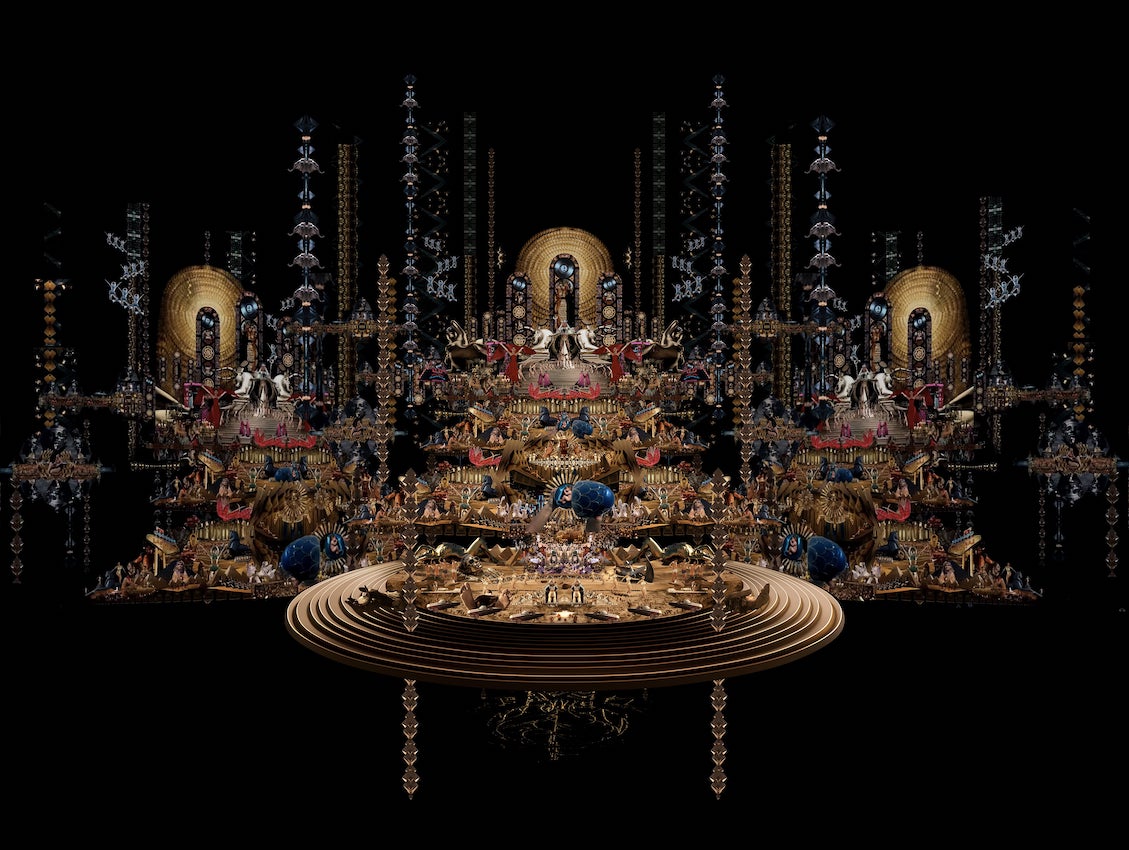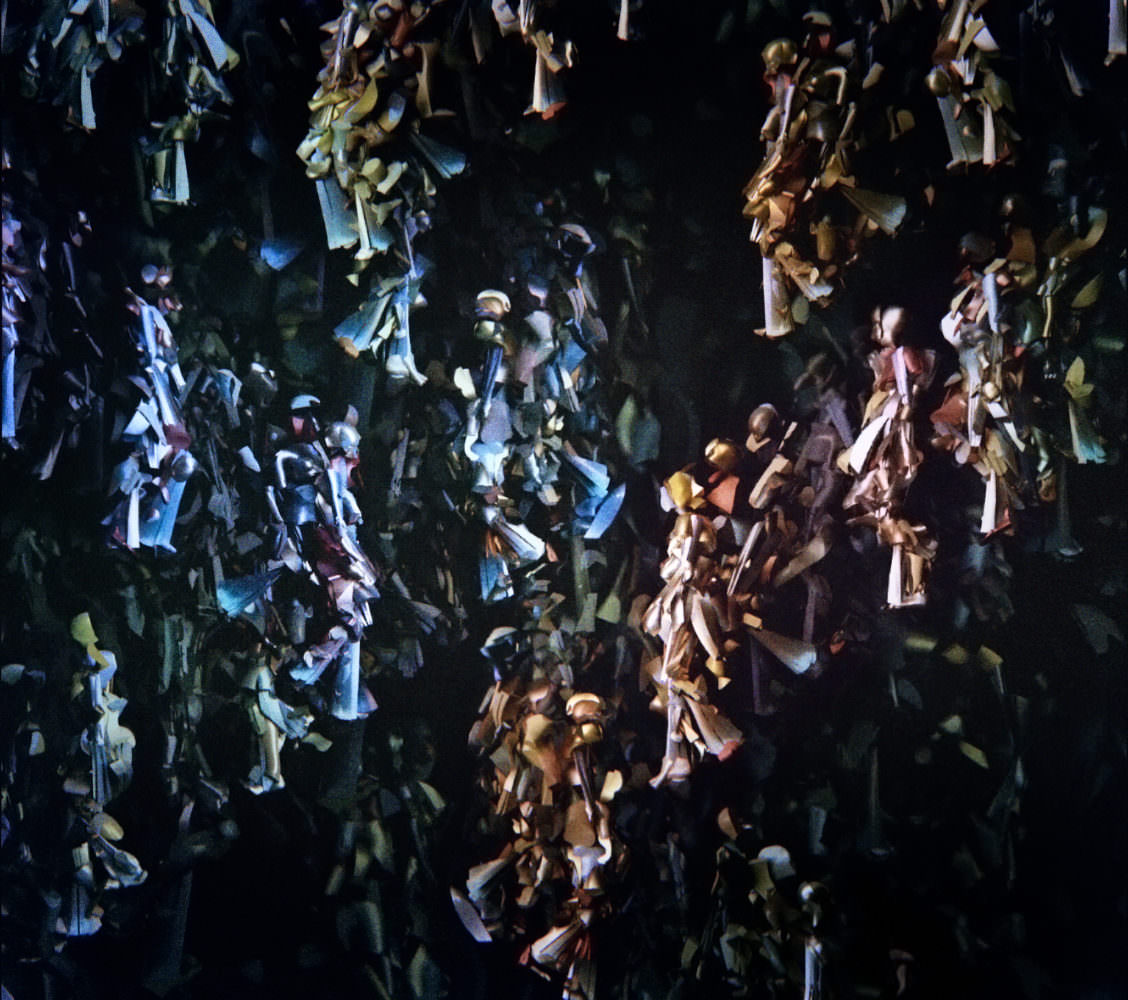From the process of creation as told through characters culled from films such as The Sound of Music, The Big Lebowski, Lord of the Rings and Mars Attacks to the melancholy recording of the last day of the space shuttle Atlantis before being decommissioned, video artist Marco Brambilla’s solo exhibition “Marco Brambilla: Creation (megaplex)” at the Nicole Klagsbrun Gallery showcases the importance of cinematic and technological icons to our collective consciousness. A fascinating juxtaposition between different filming techniques, the exhibition, on view until February 23, features two of Brambilla’s films: the deftly choreographed 3-D trip Creation (Megaplex) and the analogue, near documentary Atlantis (OV-104).
An all-engrossing cinematic voyage into a vortex-like DNA double helix, Creation (Megaplex) is the final film of Brambilla’s Megaplex trilogy that, according to Brambilla, delves into the “idea of compression and spectacle in the medium of film.” While similar to the two previous films Civilization and Evoluti
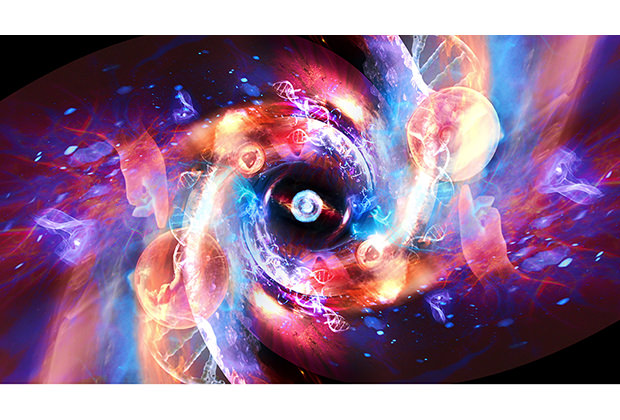
Single-channel 3D video installation
With well-known Hollywood characters, scenes, and objects such as Winona Ryder as Beetlejuice’s Lydia and Major Kong from Dr. Strangelove flying toward the viewer, spiraling around the double helix and falling down through the vortex, Brambilla weaves together the storyline of Creation (Megaplex) through careful consideration and research. Constructing collaged canvases in his studio before working on the films, Brambilla describes his process as “a stream of consciousness exercise, finding connections in movement and the character’s background.”
The easy recognition of the film characters in Creation (Megaplex) allows for the narration of the process of creation. “These spectacle films have become so cosmetic, aggressive, and interchangeable that this language could be used to communicate,” Brambilla explained. “If properly configured and collaged in a certain way, this language could be used as the brushstrokes to take this journey. It celebrates and satirizes films simultaneously.”
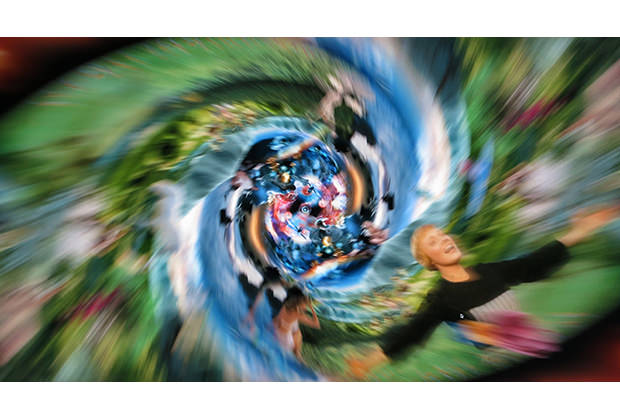
4 minute loop
Brambilla decided to use 3-D technology since many of the films he selected for Creation were being released in 3-D. Inspired by legendary film composer Bernard Herrmann, Brambilla choreographed Creation (Megaplex) to a swirling ballet/waltz by Prokofiev to further create, a constantly, moving, rotating world. Through all these aspects of the filming process from the 3-D to the soundtrack to the choice of characters, the viewer becomes transported into the film and often watches the film repeatedly, continually noticing different characters and moments.
Brambilla’s second film Atlantis (OV-104) plays on a small screen in another room of the gallery. It is a haunted, ghost-like portrait of the space shuttle Atlantis on its last day before being decommissioned in the Vehicle Assembly Building at the John F. Kennedy Space Center.
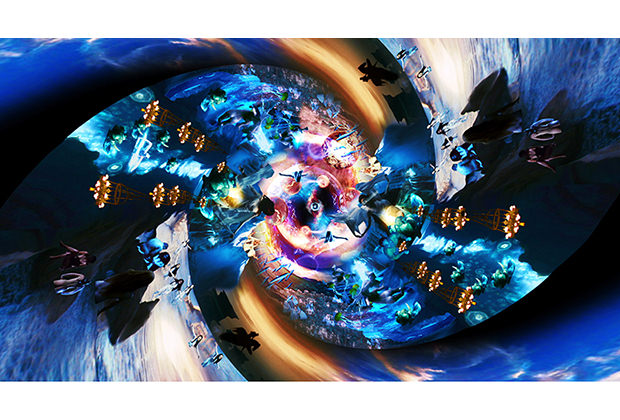
Single-channel 3D video installation
Connected to NASA through Anne Pasternak from Creative Time, Brambilla was permitted to shoot the shuttle after it came back from its missions a day before it was scheduled to be refurbished and turned into a tourist attraction. A document of America’s past technological advances, it presents the shuttle as a historical artifact representing the end of America’s man/space exploration. Filmed entirely in analogue, a technology more suited to shooting an object from a prior era, Atlantis (OV: 104) reveals both heavily abstracted close-ups of the space shuttle’s heat tiles and wide shots of the shuttle. As Brambilla notes, “We all have a memory of the space shuttle whether it is the Challenger disaster or the first landing. Now on its very last day, it has fallen to Earth.”
Brambilla’s work has been exhibited extensively in institutions both in the United States and abroad, including the New Museum of Contemporary Art, New York; San Fransisco Museum of Modern Art, San Fransisco; Santa Monica Museum of Art, Stana Monica; Corcoran Gallery of Art, Washington, D.C.; Kunsthalle Bern, Berne; Alcalá 31, Madrid. His 3D video installation, Evolution (Megaplex) is currently on view at the Eli and Edythe Broad Art Museum in East Lansing, Michigan. Brambilla lives and works in New York, New York and this is his first solo exhibition at Nicole Klagsbrun.
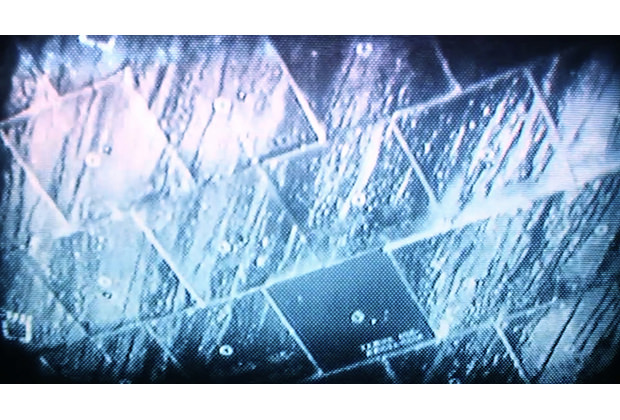
4 minute loop




